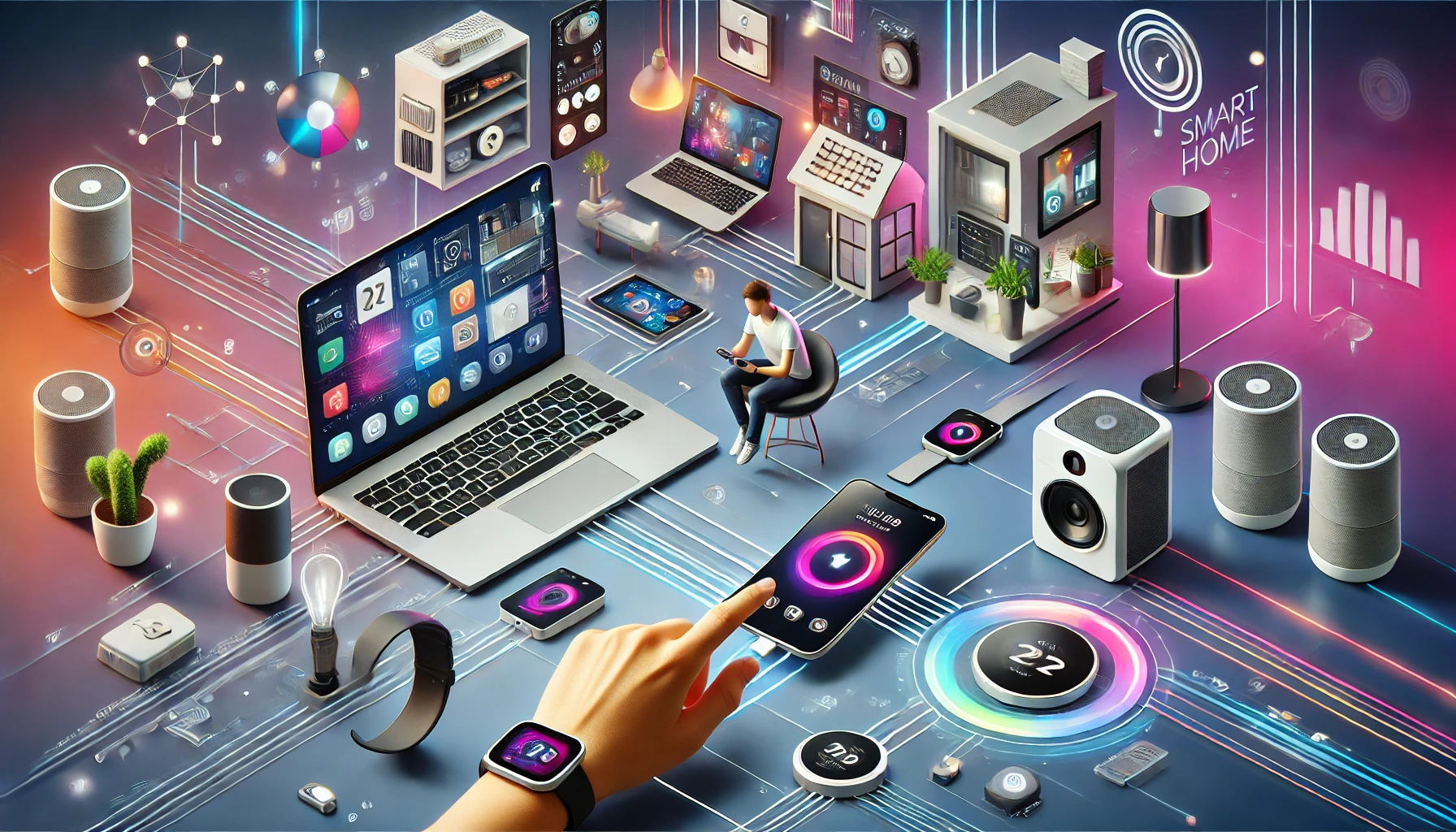Introduction
Technology is a huge part of our lives, whether we’re working from home, keeping in touch with friends, or simply trying to stay organized. But let’s be honest—sometimes, it can feel a little overwhelming. That’s why we’ve put together a list of helpful technology tips that will make your life easier, more productive, and maybe even a little more fun.
In this post, we’ll cover practical tech hacks that you can start using today. No technical jargon—just simple, human-friendly advice that even the least tech-savvy person can understand. Let’s dive in!
1. Organize Your Digital Space
Clutter isn’t just a problem in your physical space—it can also slow you down digitally. From your phone’s home screen to your computer desktop, a chaotic space can make it hard to find what you need.
- Tip 1: Declutter your desktop and home screen. Organize apps and files into folders by category (e.g., work, personal, entertainment).
- Tip 2: Use cloud storage like Google Drive or Dropbox to store important documents, so you can access them from anywhere.
- Tip 3: Turn off unnecessary notifications. Go to your phone settings and select only the apps you want to hear from—this will make your device less distracting and more efficient.
2. Use Keyboard Shortcuts to Save Time
Keyboard shortcuts are like a magic wand for getting things done quicker. Mastering a few basic shortcuts can save you time and make you more productive.
- Tip 1: Learn the most common shortcuts, like:
- Ctrl+C to copy
- Ctrl+V to paste
- Ctrl+Z to undo
- Ctrl+S to save
- Tip 2: Customize your shortcuts! On many devices, you can create personalized shortcuts for frequently used tasks.
3. Automate Routine Tasks
Automation sounds fancy, but it’s really just about using tools that handle repetitive tasks for you, so you don’t have to.
- Tip 1: Use email filters to automatically organize your inbox. For instance, emails from your boss can go straight into a “Work” folder, while newsletters go into a “Read Later” folder.
- Tip 2: Set up auto-replies for times when you’re away from your computer or phone. Both Gmail and Outlook allow you to schedule auto-replies to manage expectations.
- Tip 3: Automate your social media posts. Tools like Hootsuite or Buffer allow you to schedule posts in advance, saving you time and keeping your accounts active.
4. Keep Your Devices Secure
Security is important, but it doesn’t have to be complicated. A few simple steps can go a long way in protecting your data and devices.
- Tip 1: Use two-factor authentication (2FA) whenever possible. This adds an extra layer of security by requiring both a password and a second form of verification (usually a code sent to your phone).
- Tip 2: Regularly update your software. Many updates include important security patches that help protect your device from viruses and hackers.
- Tip 3: Be cautious about public Wi-Fi. When using public networks, avoid logging into sensitive accounts (like banking apps). If you need to, consider using a VPN for added protection.
5. Boost Your Wi-Fi Signal
Nothing is more frustrating than a slow internet connection, especially when you’re in the middle of an important task. Here are some tips to boost your Wi-Fi speed.
- Tip 1: Place your router in a central location. Walls, furniture, and appliances can block the signal, so try to keep the router in an open, elevated spot.
- Tip 2: Change your Wi-Fi channel. Sometimes neighboring networks can interfere with your signal. Your router settings allow you to switch to a less crowded channel for better performance.
- Tip 3: Use Wi-Fi extenders or mesh networks to cover larger areas in your home. This is especially useful if your internet slows down in rooms far from the router.
6. Use Cloud-Based Tools for Collaboration
Whether you’re working on a group project or organizing a family event, cloud-based tools make collaboration easy and efficient.
- Tip 1: Use Google Docs for real-time collaboration. Multiple people can work on the same document at the same time, and changes are saved automatically.
- Tip 2: Share calendars with others using tools like Google Calendar. This makes scheduling meetings or appointments easier.
- Tip 3: Use a project management tool like Trello or Asana to assign tasks and track progress, ensuring that everyone stays on the same page.
7. Stay On Top of Password Management
We all have too many passwords to remember, but using the same password everywhere isn’t safe. Thankfully, technology has some easy solutions.
- Tip 1: Use a password manager like LastPass or 1Password. These tools store all your passwords securely, and you only need to remember one master password.
- Tip 2: Create strong passwords by using a combination of letters, numbers, and special characters. Avoid using obvious choices like “password123” or your birthday.
- Tip 3: Change your passwords regularly, especially for important accounts like email, banking, and social media.
8. Conserve Battery Life
Running out of battery at a crucial moment can be a nightmare. Here are some tips to keep your devices powered up longer.
- Tip 1: Lower the brightness on your screen. Your display is one of the biggest battery drainers, so dimming it a bit can save a lot of power.
- Tip 2: Turn off background apps. Some apps run in the background even when you’re not using them, draining your battery. Go to your phone’s settings and close any apps you don’t need.
- Tip 3: Enable battery saver mode. Most devices have this feature, which limits background activity and extends your battery life when it’s running low.
9. Enhance Your Online Learning Experience
Whether you’re learning a new skill or taking an online course, using technology effectively can help you get the most out of it.
- Tip 1: Take advantage of note-taking apps like Evernote or OneNote to organize your thoughts and keep track of important information.
- Tip 2: Use video playback speed controls. Platforms like YouTube and online learning websites allow you to slow down or speed up videos to match your learning pace.
- Tip 3: Set reminders to revisit what you’ve learned. Spaced repetition is key to long-term retention, and apps like Anki can help with this by scheduling reviews for you.
Conclusion
Technology should make your life easier, not more complicated. By following these simple technology tips, you can stay organized, save time, and keep your devices running smoothly without needing a degree in computer science. Whether it’s decluttering your digital space, learning handy keyboard shortcuts, or improving your Wi-Fi signal, these tips are designed to be easy to implement and helpful for everyone.
FAQs
1. What are some simple technology tips to stay organized?
Some simple tips include organizing your desktop or phone apps into folders, using cloud storage to keep your files accessible, and turning off unnecessary notifications.
2. How can I make my Wi-Fi signal stronger?
Place your router in a central location, change your Wi-Fi channel to reduce interference, and consider using Wi-Fi extenders to cover larger areas.
3. What is two-factor authentication, and why should I use it?
Two-factor authentication (2FA) adds an extra layer of security by requiring both a password and a code sent to your phone or email. It helps protect your accounts from hackers.
4. How can I manage my passwords more easily?
A password manager like LastPass or 1Password can securely store all your passwords. You only need to remember one master password, making it easier and more secure.
5. How can I save battery life on my phone?
Lower your screen brightness, close background apps, and enable battery saver mode to extend your phone’s battery life.
With these tips in hand, you’ll be well on your way to mastering technology in a way that’s simple, secure, and stress-free!









